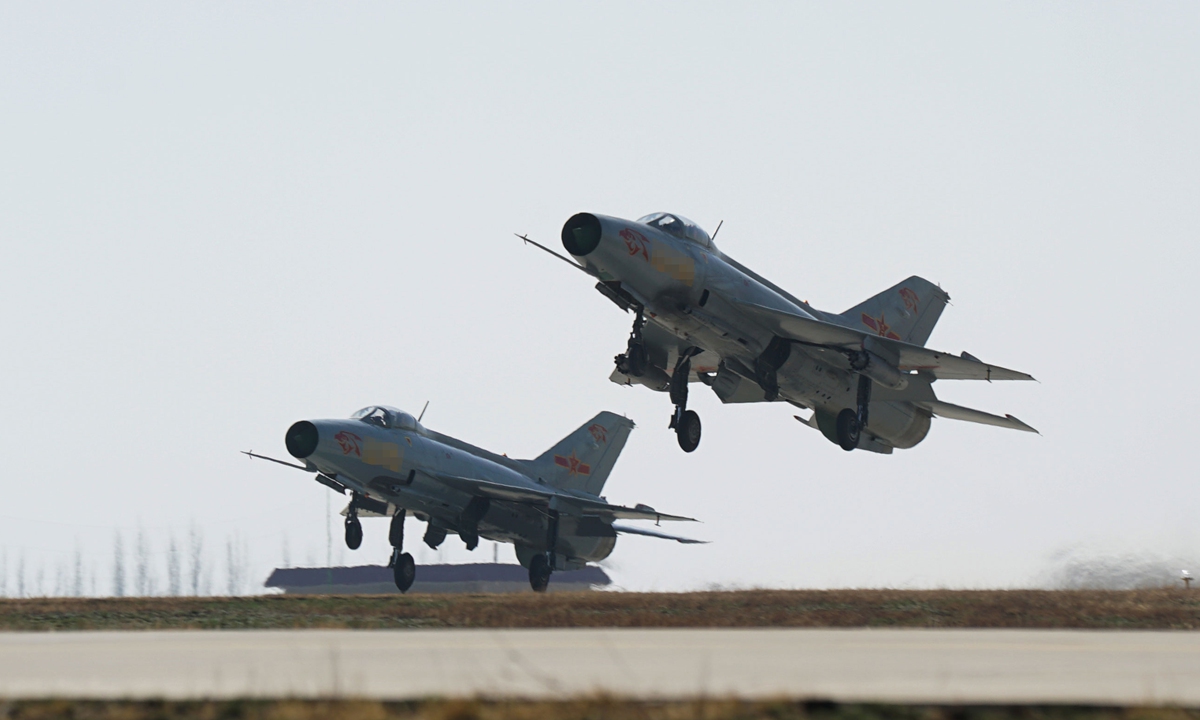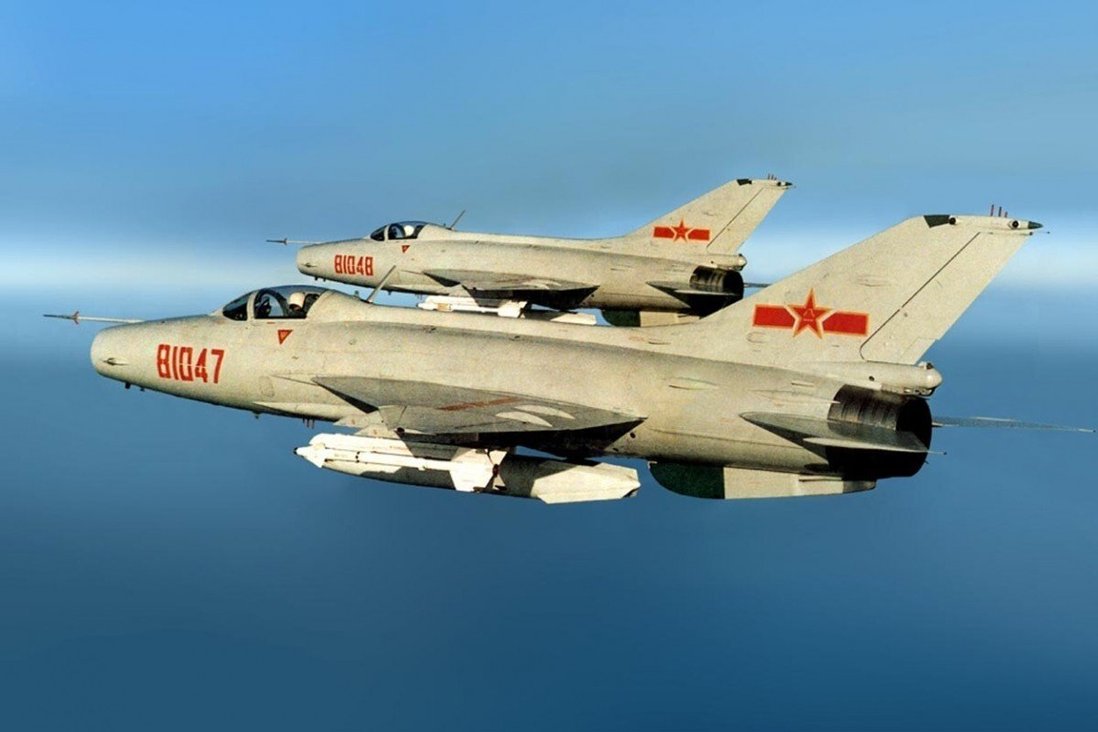A Chinese PLA Air Force (PLAAF) J-7 fighter aircraft crashed yesterday during training in Xiangyang, Hubei Province, killing one resident and injuring two, according to the state broadcaster.
While the J-7 pilot ejected safely, the crash led to an explosion near the Laohekou airport. Multiple videos shared on Chinese social media Weibo purported to show that some houses near the crash site were substantially damaged and engulfed in fire.
Firefighters directed water hoses onto a mound of rubble at the side of what appeared to be a three-story building in one footage released online. Laohekou Airport is used to train new fighter pilots from the Central Theatre Command Air Force.
“Laohekou Airport is now mainly used as a training site for new fighter pilots from the Guangzhou Military Region Air Force. The airport, which has a 5,960-metre runway, stopped serving civil aviation routes after the Liuji Airport in Xiangyang opened in 1989,” South China Morning Post (SCMP) reported.
⚡️ J-7 fighter jet crashed in China
A PLA Air Force Chengdu J-7 fighter jet crashed this morning in Hubei province. The plane crashed into a residential area after taking off from Xiangyang Airport for a training flight. pic.twitter.com/HZ4hHY1Mkh
— Flash (@Flash43191300) June 9, 2022
In the last few years, several Chinese fighter planes have crashed during training flights. For instance, in 2015, a PLAAF pilot safely ejected only minutes before his plane went down a hillside. A military pilot died two years earlier when his fighter aircraft crashed during night training in eastern Zhejiang.
Meanwhile, the jet crash on Thursday was the third aircraft mishap in China since March of this year. A passenger plane carrying 122 people from Tibet Airlines skidded off the runway and caught fire during take-off in China’s southwest Chongqing city last month, injuring over 40 people.

On March 12, an Eastern Airlines plane crashed into a mountainous area in the southern Guangxi Zhuang region. The crash killed all 132 passengers and crew on board, making it the country’s biggest flight catastrophe in decades.
According to China’s civil aviation authority, the Boeing 737-800 plane was on its way from Kunming to Guangzhou when it crashed from a cruising altitude of 8,900 meters (29,199 feet).
The cause of the crash is still being investigated. However, the Wall Street Journal claimed last month that US authorities believe someone on board intentionally crashed the Boeing 737-800.
J-7 Fighter Aircraft
The latest incident highlights China’s continued use of the 1960-era J-7 fighter jets. These fighters are comparable to the aging Mig-21 jets used by the Indian Air Force.
However, China manufactures all spare components and maintains a controlled industrial ecosystem around the plane, supporting its modernization.
Chengdu Aircraft Corporation (CAC) of China designed and produced the J-7 single-engine, lightweight fighter aircraft. Its design is based on its predecessor, the MiG-21 aircraft. The F-7 is the export variant of the J-7.
The J-7 / F-7 was designed primarily to serve the needs of the People’s Liberation Army Air Force (PLAAF).
In March 1961, Russia and China reached an agreement to transfer MiG-21 technology. However, due to deteriorating relations between Beijing and Moscow at that time, technical documentation was not delivered to the Shenyang Aircraft Factory.
Through reverse engineering, the company was able to produce its own version of the MiG-21. The Chinese-made MiG-21 was first known as Type 62 when it was developed in March 1964. It was later renamed the J-7 (Jian-7).
The J-7’s airframe was evaluated in November 1965, and the aircraft took its maiden flight in January 1966. The Chinese military approved the J-7 as an operational aircraft in June 1967.
The J-7 was developed into more than a dozen variations throughout the course of its 48-year production run. After improving the technology of the original versions into the J-7PG and J-7BG series for Pakistani and Bangladeshi air forces, Chengdu created trainer derivatives of the aircraft for domestic Chinese usage, which were provided to both the PLA Air Force and the PLA Naval Air Force.

In 2013, the firm halted production after delivering the remaining 16 F-7BGI to Bangladesh. According to some estimates, over 2,400 models of the aircraft were produced.
With a presence in more than 17 countries, including four Indian neighbors — Bangladesh, Pakistan, Sri Lanka, and Myanmar — the Chengdu J-7 is China’s most exported aircraft.
Last year, the aircraft made headlines when it engaged in drills near Taiwan accompanied by more advanced fighter jets, surprising the western world. The aircraft is often known as the “grandpa fighter jet” in Taiwan.
China is thought to have converted thousands of obsolete second-generation fighters, including J-7s, into unmanned aerial vehicles (UAVs).
Experts claim that some J-7s were converted into target drones since their radar cross-section images were comparable to Taiwanese IDF planes and US-made F-16s, potentially deceiving air defenses.
The PLA has been deploying converted J-7s for target practice since 1997, according to Macau-based military observer Antony Wong Tong.
“There are many variants of the J-7s … which were all dubbed ‘mini F-16s,'” Wong said. “Mainland China has also exported the variant J-7s to Pakistan, which used them for mock dogfights.”
- Contact the author at etdesk@eurasiantimes.com
- Follow EurAsian Times on Google News




